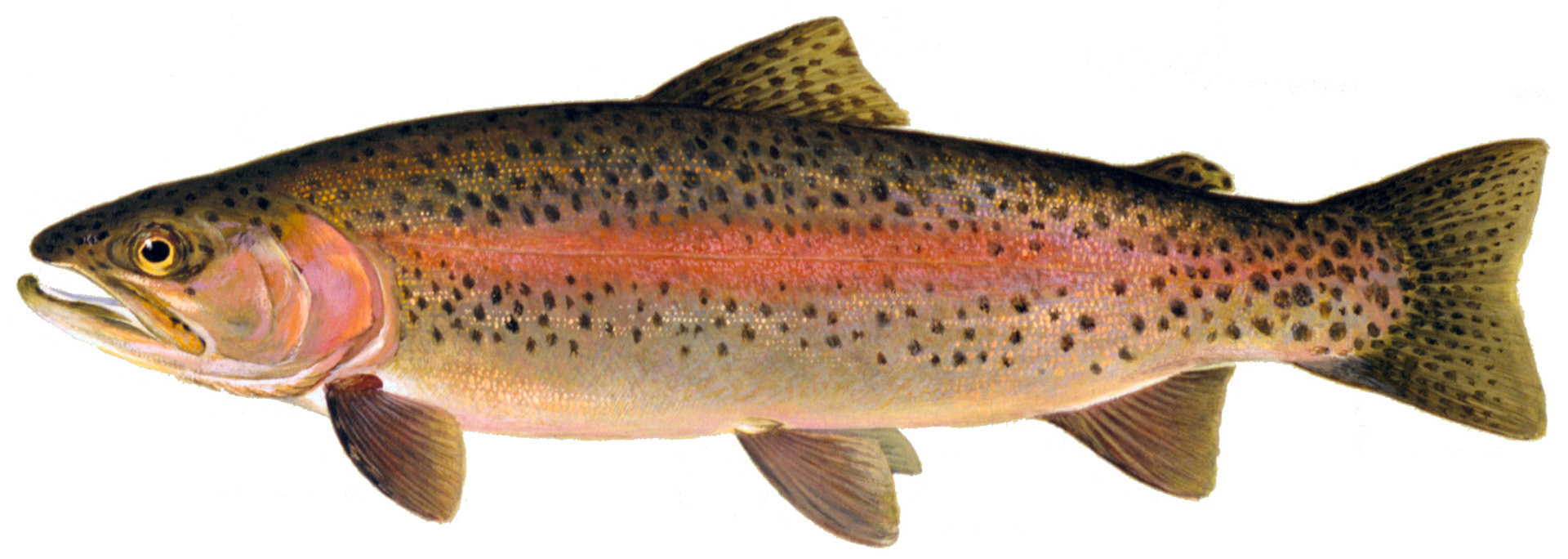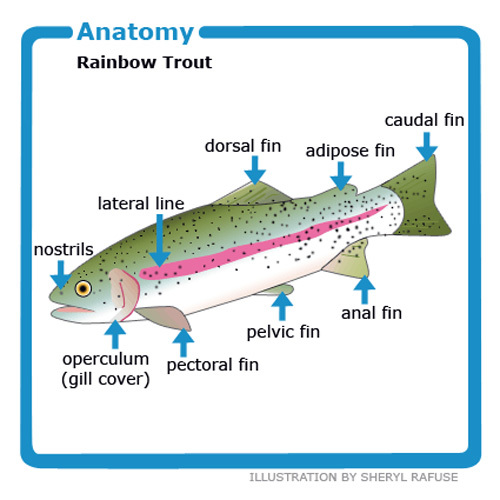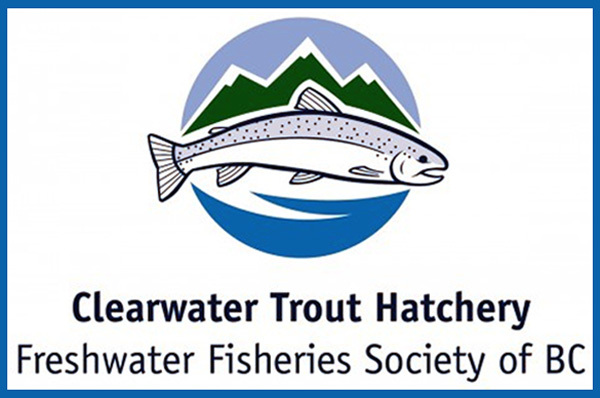|
 Clearwater Trout Hatchery - Clearwater, British Columbia Posted by:  T0SHEA T0SHEA
N 51° 38.811 W 120° 03.747
10U E 703226 N 5725848
Visitors are welcome to view the hatchery via a self-guided tour that includes access to a number of rearing containers that have live fish in them. Hatchery staff will be available to answer any questions during the self-guided tour.
Waymark Code: WM119Z8
Location: British Columbia, Canada
Date Posted: 09/14/2019
Views: 2
 "Fast Facts: Rainbow trout
"Fast Facts: Rainbow trout
Scientific name: Oncorhynchus mykiss
Average weight: 1 to 7 kg but can reach up to 9 kg
Average length: 30 to 75 cm but can reach up to 90 cm
Average lifespan: 4 to 6 years (in the wild)
Did you know?
The rainbow trout is a member of the salmon family and can get quite hefty. The largest recorded rainbow trout was 25.8 kilograms!
Physiology
 A rainbow trout has a long, skinny body and can come in a variety of colors from brown and black to olive and blue-green. No matter the color, the rainbow trout always has a reddish stripe length-wise down both sides of its body. The fish’s underbelly is white and tiny black spots cover its back, sides and fins.
A rainbow trout has a long, skinny body and can come in a variety of colors from brown and black to olive and blue-green. No matter the color, the rainbow trout always has a reddish stripe length-wise down both sides of its body. The fish’s underbelly is white and tiny black spots cover its back, sides and fins.
The rainbow trout actually has seven fins in total: a pair of pectoral fins, a pair of pelvic fins, an anal fin, a dorsal fin and an adipose fin. To distinguish wild rainbow trout from the hatchery kind, fish hatched and raised in captivity and then released into the wild, oftentimes the adipose fin will be clipped in the hatchery variety.
The fish has sharp teeth on the roof of its mouth but has no lower teeth at all.
Habitats/Behaviours
Rainbow trout are carnivores that won’t eat any vegetation growing in the water. Insects, leeches, small fish, crayfish and mussels are just a few delicious treats a rainbow trout likes to munch on.
This fish likes to live in cool freshwater but some of them migrate into saltwater and become steelhead trout. Steelheads are the same as rainbow trout except in saltwater, the fish gets bigger, eats larger prey and has to return to its birthplace to spawn, much like a salmon. However, the freshwater rainbow trout does not have to migrate back to its birthplace to lay its eggs.
To lay her eggs, a female rainbow trout must dig a nest in the gravel at the bottom of the body of water. To build this nest, called a red, the female turns her body to the side and flaps her tail, creating a depression in the gravel. She then lays up to thousands of eggs in multiple redds. As she is doing this, one or more male rainbow trout fertilize the eggs with something called milt."
Source: Canadian Geographic
 The Clearwater "Trout Hatchery was originally built in 1985 for the Department of Fisheries and Oceans to rear salmon for release in the North Thompson drainage. In 1997, the Province purchased the facility and refitted it for trout and kokanee production.
The hatchery stocks fish into approximately 330 lakes annually, in all regions except Vancouver Island. Most fish stocking occurs in Interior and Northern lakes in BC. Over 3 million fish are released each year including several strains of rainbow trout, brook trout, and kokanee. The Clearwater Trout Hatchery is the only FFSBC (Freshwater Fisheries Society of BC) hatchery that stocks kokanee salmon in British Columbia." Source: Clearwater Chamber of Commerce
We planned our trip to visit the Clearwater Trout Hatchery, and our experience was outstanding. We were greeted by one of the employees and offered a personal tour of the facilities. We watched the tiny trout, just weeks old, swim about in a large holding trough. Outside are large holding tanks with trout almost ready for transfer to local lakes. We enjoyed our visit, and the young lady was so kind and informative.
We learned that the Clearwater Hatchery does some of their own collection of kokanee eggs along the riverbanks in late July. Over 3 million kokanee eggs were collected and transferred back to the hatchery to be raised over winter for stocking in the spring.
Transfer Program
Clearwater Trout Hatchery also operates as a transfer station to be distributed into Cariboo and North Thompson lakes. The Prince George Trout Facility operates only as a transfer station for the northern lakes. During the spring and fall, groups of fish reared at other hatcheries are transferred in large trucks and held in containers for periods of up to 2 weeks. These fish are loaded into smaller trucks which take them to the lakes. About 900,000 fish are shipped into Clearwater while another 300,000 are shipped into the Prince George Trout Facility.
Transcribed from sign
Type of Facility: Fish Hatchery

Management Agency: State/Provincial Government

Has a Vistor Center: yes

Offers Tours: yes

Relevant Web Site: Not listed

|
Recent Visits/Logs:
| There are no logs for this waymark yet. |
|
|
|
|